We’ve introduced before the American involvement in armored warfare in the last months of World War I. At the time we promised you a report on the battles, and a description of the hardware involved. This is the hardware post.
While American manufacturers, notably including Ford Motor Company, quickly pledged to build tanks, their industrial production had no material affect on the war; but a time tanks were coming off American production lines, the war was over. And the first American tanks were, or were intended to be, built on foreign patterns.
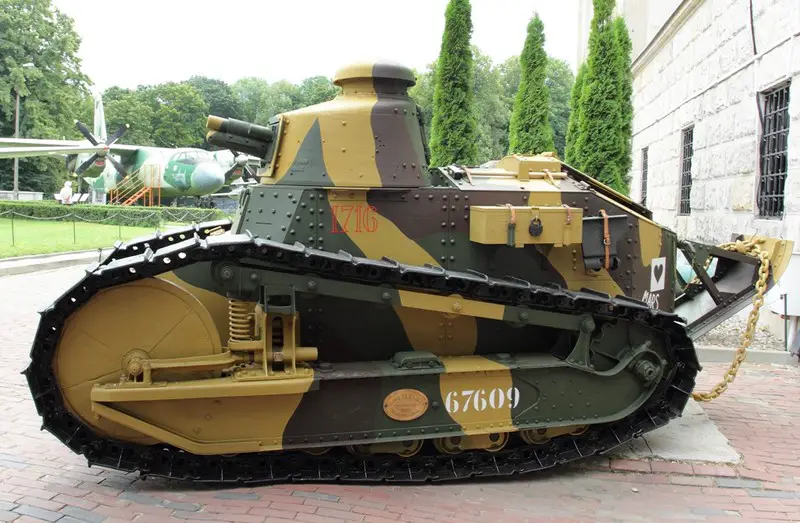
Renault FT17. This one is preserved at a Polish military museum, part of the global FT17 diaspora; this tank was a gift from Afghanistan to Poland for Polish support. The tank may have been used in the Russo-Polish War and captured by the Soviets, then given to Afghanistan; or it could just be a tank the Kingdom of Afghanistanw bought on the world market in the 1920s or 30s. It is the 37mm, 20-caliber variant. The US Army also used these tanks, and built a copy under license.
This was because America was fresh in the war, and largely unprepared; apart from our tiny professional military caste, most Americans hadn’t even been following it very closely. There was a vague understanding of things called “tanks,” but no grasp of their design details, let alone how to build them.
That should’ve been slightly embarrassing, because the concept of the tank came from arming and armoring the American-designed Holt tractor in the first place.
With no tanks in production, the US certainly had no tank tactics or operational art, and it set out to learn from the experienced nations that would provide the tanks: Great Britain and the Republic of France.
After over three years of war, the British and French were eager to share what they’d learned. You might think that they’d be reluctant to give up any share of their tank production to the war’s newcomer, but their problem was a mirror image of the Americans’: the Yanks had volunteers but no experience, training, or tanks, and the European Allies had too much experience, production lines producing more tanks than they could use, and a shortage of manpower after years of blind, wasteful attrition on the Western Front. Indeed, the French and especially the English hoped that the Americans would just provide them with warm bodies, to be expended as replacements in their own bled-out regiments, under the leadership of the same guys responsible for bleeding the regiments out. The US commander, General John Pershing, forcefully declined this offer every time it was made.
The Americans would fight in their own units, under their own leaders. Decision made.
Despite that one disagreement, coalition warfare went remarkably well. American tank units — once trained — worked with British Commonwealth and French units, and even incorporated, at one point, a French tank company in their task organization. At one point, this produced a moment of combat laughter when an American unit sent their valiant French interpreter to stop and redirect a supporting French tank — only to have the turret hatches clank open, and an American TC pop out — “What the hell do you want?”
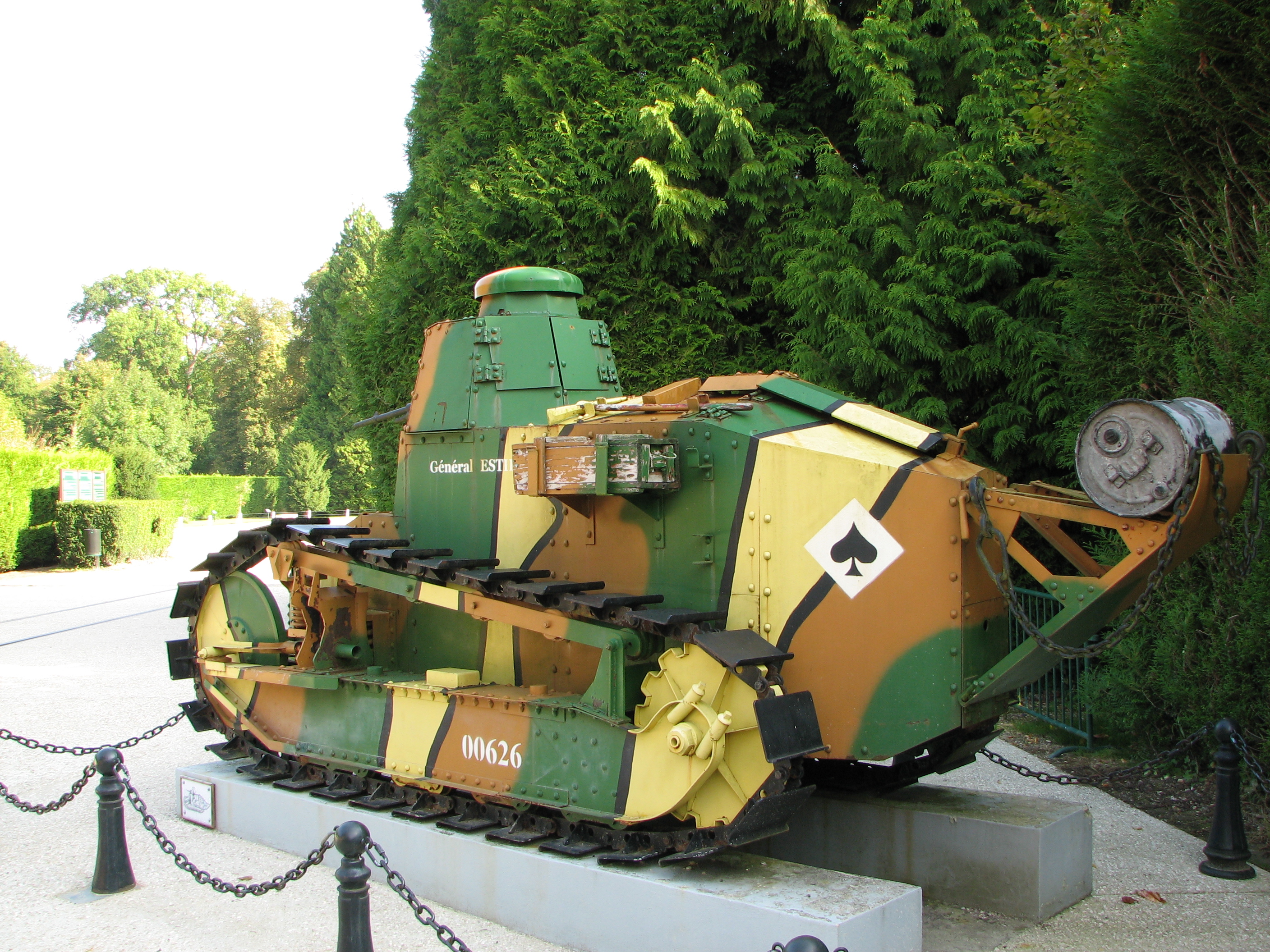
This FT17 is on display in Compiègne, France. The card-suit markings were used by French and American tank units in WWI. The high-contrast camouflage was intended to break up the tank’s outline, especially versus aerial reconnaissance. The TC’s ingress and egress was through the double-door hatch in the back of the turret. Most photos in this post expand with a click.
Light Tanks from France
The confusion was obvious, because the American tankers were in a French Renault FT, the light tank America adopted from France. Attempts to build this simple, light (about 7 metric tons) two-man tank in the USA bore no immediate fruit. Ford first redrew every Renault drawing and redimensioned them in Imperial units, with the predictable result that none of the Ford parts fit the Renaults, and vice versa. Even the tracks didn’t match: the French tracks were 13″ wide, and the US copy 13 3/8″. The US-designed and built Mk VIII Liberty tank was in the style of the larger British tanks, but powered by the US Liberty engine (the engine was one of the few success stories in American war production in WWI, but the tank wasn’t). In any event, mere token numbers of the American tanks got to the American Expeditionary Force by the Armistice. The hundreds of tanks actually used were all made in France.
The Renault FT light tank was a product of French doctrine, which emphasized small, maneuverable tanks that could act as mobile pillboxes for the infantry in the advance. France produced a couple thousand of the FT, which came in a single 8mm Hotchkiss MG version, or in a stubby 37mm L/20 cannon version (the gun barrel was only 720 mm, about 28″, long — shorter than a lot of duck guns). The USA used both versions, organized into Light Tank Companies and Light Tank Battalions, on the Western Front.
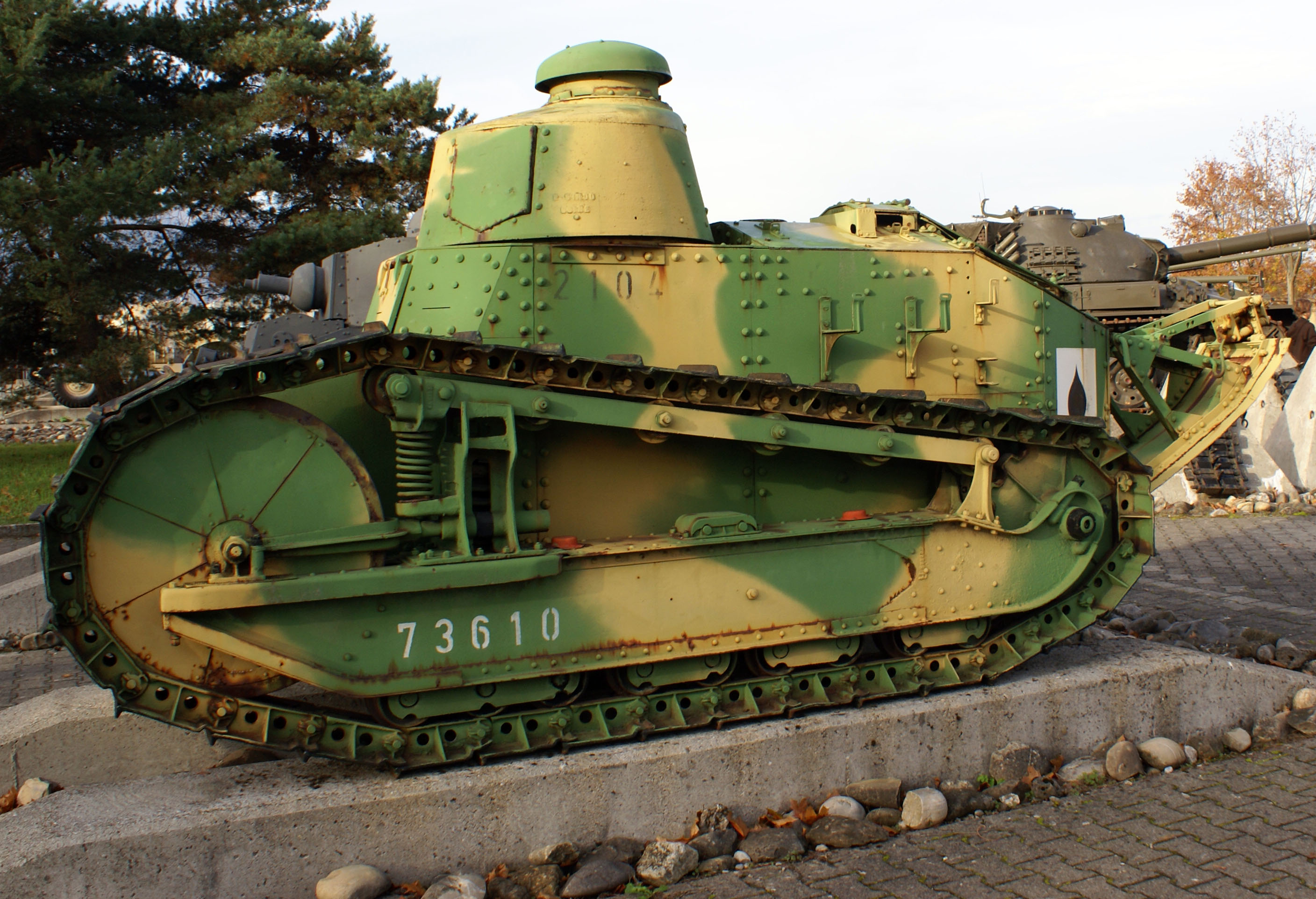
This FT was delivered to Switzerland for tests in 1921, in hopes of a sale. It is preserved today in Thun.
All these pictures make the size of the FT unclear — it looks pretty big. Actually, its nearest analogy might be a 1960s VW Beetle, although it’s taller. It would fit in the average garage. This maintenance photo, from tank expert Steven Zaloga’s photobucket, gives you a better idea of the sheer size, or lack of it, of the FT:
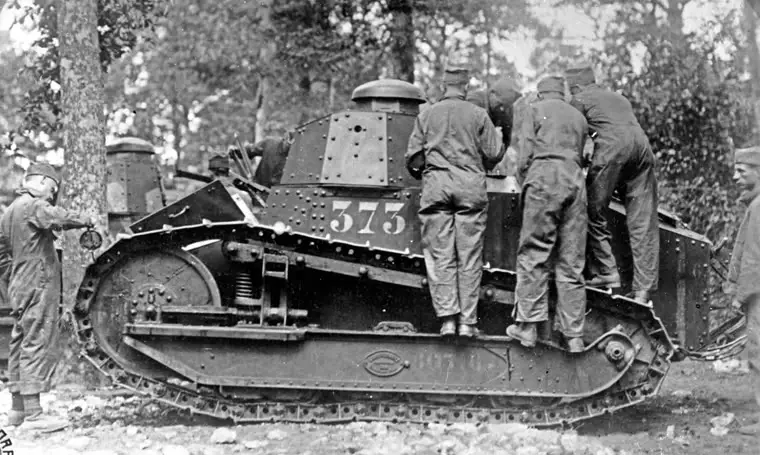
In Wilson, this image is identified as American crewmen receiving training on the FT17 at the 311th Tank Center at Bourg, France. The men are wearing American uniforms.
This period French manual illustration doesn’t help as the poilus inside are drawn rather small. It does show the layout of the tank, though. The FT is laid out much like WWII and modern tanks — armament in a turret, engine in the back:
There were quite a few variations of the FT17. For example, the British tank museum at Bovington preserves a prototype with a one-piece cast turret; versions exist with spoked steel idler wheels (the big wheels up front) and with built-up wooden idlers.
Cast armor was unusual in World War I. Most tanks were protected by face-hardened armor, which is obvious when you see the shattered plates of a destroyed one.
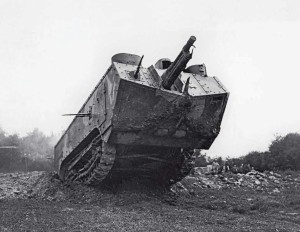
St. Chaumond Heavy Tank. The “prow” was for negotiating trenches, the main gun a French 75, the secondary armament 8mm Hotchkisses, fired by crouching soldiers who couldn’t stand up or sit down in the cramped tank.
France had made heavy tanks too, the Schneider and the St. Chaumond. In fact, France had been developing tanks for about as long as Britain had, but seems to get short shrift in English-language sources. In any event, the large French tanks were little loved by the French, and were rejected by the Yanks:
Neither vehicle could be truly classified as a tank. Instead, they were nothing more than armored artillery carriers requiring infantry skirmishers to lead them into battle, carefully marking the routes that should follow. Underpowered and lightly armored, they did poorly traveling cross-country, and their crews suffered badly if they received direct hits from artillery fire.1
The French, by late 1917, had put their faith in the light tank; while they still operated the clumsy behemoths, their production was heavily weighted to the small FT, optimized for accompanying infantry in the assault.
The Americans turned instead to Britain for heavy tanks.
Heavy Tanks from Great Britain
Britain had a completely different concept of tank warfare than France – attempts to reconcile these differences had been unsuccessful, with each nation going its own way – and their vision was of the tank going out ahead of the infantry to make a breakthrough, which infantry would then exploit. Each British tank, then, was a sort of a landship, capable of fighting independently or in conjunction with other tanks. They normally employed a team with a cannon-and-MG-armed “male” tank “married up” with an MG-only “female.” (A tank that bore both cannon and MGs? “Hermaphrodite.” Heh.) As you might expect these landships were large and well-armored and armed for the day.
British tank models were logically, if unimaginatively, numbered in sequence from the pioneering Mark I of 1915, and the two models the Americans acquired were the Mark V and the Mark V*, which Americans usually referred to in speech and even in writing as the Mark V Star. Readers familiar with British small arms of the period will recognize the * as a marker of a modification, but the Mark V* was quite a bit different from the ones which had no stars upon thars. (Apologies to Dr. Seuss. Couldn’t resist). It was longer, heavier, and improved in many small ways.
The Mark V is what you think of when you envision the classic, lozenge-shaped tank of World War I. Relatively few of these tanks survive; most of the survivors are in Ukraine, Russia or the other former Republics of the Soviet Union, and are remnants of UK/US intervention at Archangelsk, and Western support to the White Armies in the Russian Civil War. The Soviets preserved this history to a greater extent than the Americans or Britons did. For example, two Mark Vs were preserved in Luchansk, Ukraine. They were in bad shape, with battle damage, rust, e…generations of looting, more rust, and…
…covered in grafitti (whoever Artyom is, he’s an asshat), but the tanks were removed and restored:
…and replaced. (In he picture below, one of the restored tanks is in place, the restoration of the park is yet to get started).
One fascinating find during the restoration: a rifle cartridge case. But it doesn’t look like a Russian 7.62 x 54R to us; it looks like a rimless case. Could this tank have belonged to the American contingent at one time? The case looks too short to be a .30-06. The button appears to be a British Army one, too. A mystery!
Another fascinating find: what appears to be one of the same tanks during the Civil War, captured by the White-aligned “Don Army” of rebellious Cossacks:
Lugansk/Luhansk is in disputed territory in the Ukraine and was seized by Russian troops and Russian-controlled militia in 2014. It has been the scene of much fighting, and it’s unclear whether the monument tanks have survived. It’s the least of the many pities of that civil war, one supposes, but a pity nonetheless.
Returning to our American tankers of a century ago: as nearly as possible, American tankers tried to keep the Mark Vs and the different V*s sorted by assigning them to different Heavy Tank Companies, which were assigned to Heavy Tank Battalions.
All tanks of the period were very unreliable; for every one killed by enemy countermeasures (artillery, mines, and the Anti-Tank Rifle) literally dozens broke down or got bogged down. An important part of tank planning was the establishment of engineering organizations to recover, repair, and return to the combat force those abandoned tanks.
This artwork, The Tanks at Seicheprey by Harvey Thomas Dunn, is in the US Army collection. Dunn observed the attack depicted in this impressionistic illustration, the first day of the St. Mihiel offensive.
It’s reminiscent of this famous photo, which is often displayed divorced from the information about it. But this is actually a photo of an American tank in combat in the Great War — a very rare thing.
This photo was taken at Seicheprey. Compare the tank’s attitude to the background tank in Dunn’s illustration. But we know the unit, the 326/344th Light Tank Battalion2, and the driver, Corporal George Heesch.
All of the world’s tank types have their ancestry in these flimsy, brittle, unreliable machines.
Surviving WWI Tanks
Some tanks were produced in very low numbers, like the German A7V. Others were mass produced — there are images of production lines for the British tanks. All in all, thousands of tanks were produced, including nearly 2,000 Renault FTs and probably another 1,000 to 1,500, maybe more, of all other types combines. Yet, only a dozen or two tanks survived, not the war, but the century between then and now.
We know of two lists of surviving Great War tanks: Dave Maynard’s which comes up as disabled due to nonpayment, and an illustrated list found on sub-pages of the Surviving Panzers page: http://the.shadock.free.fr/Surviving_Panzers.html
That includes ….
…this list of non-FT-17 type WWI tanks surviving, including reproductions: http://the.shadock.free.fr/Surviving_WW1_Tanks.pdf
…this list of FT-17s: http://the.shadock.free.fr/Surviving_FT-17.pdf
…this list of US M1917 Six Ton Tanks: http://the.shadock.free.fr/Surviving_6ton_M1917.pdf
Notes
- Wilson, Dale E. Treat ‘Em Rough: The Birth of American Armor, 1917-20. p. 9.
- Wilson, pp. 116-117, note 53, explains that Patton’s battalions were renumbered by HQ on the eve of the St. Mihiel offensive. At the time this photo was taken, in September 1918, the unit was already the 344th but the old 326th was still the name everyone was using.

Kevin was a former Special Forces weapons man (MOS 18B, before the 18 series, 11B with Skill Qualification Indicator of S). His focus was on weapons: their history, effects and employment. He started WeaponsMan.com in 2011 and operated it until he passed away in 2017. His work is being preserved here at the request of his family.

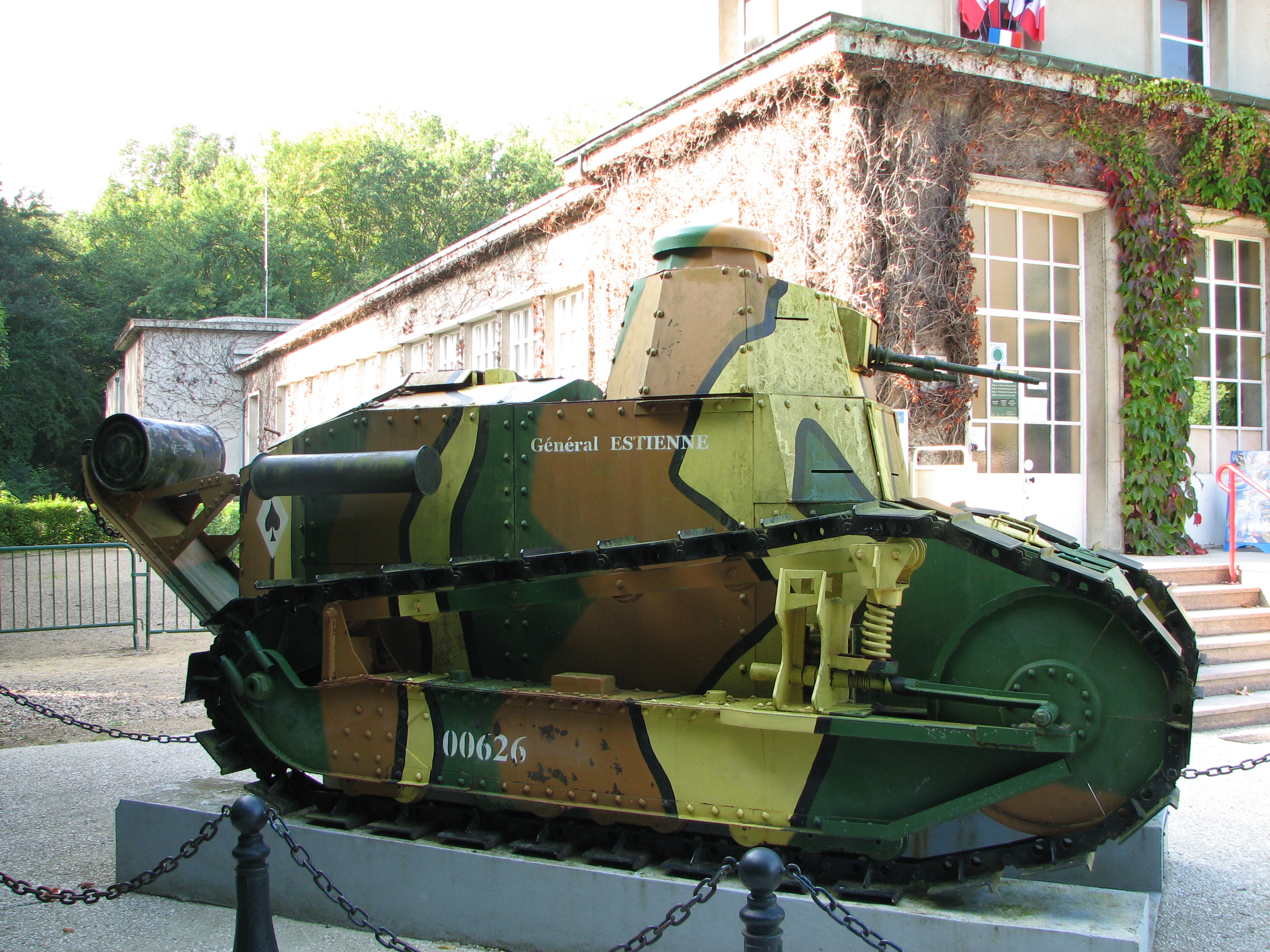
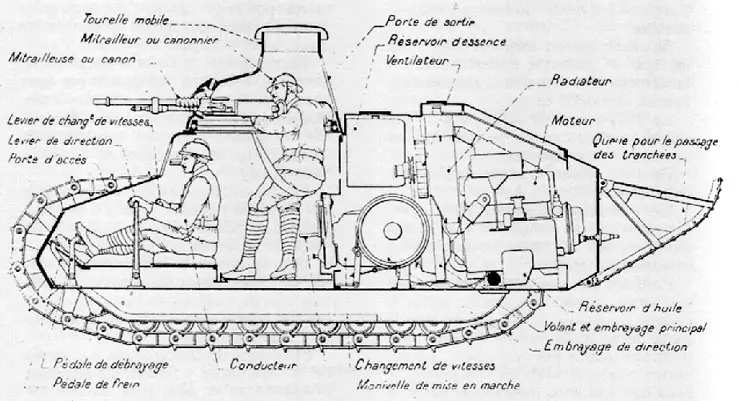
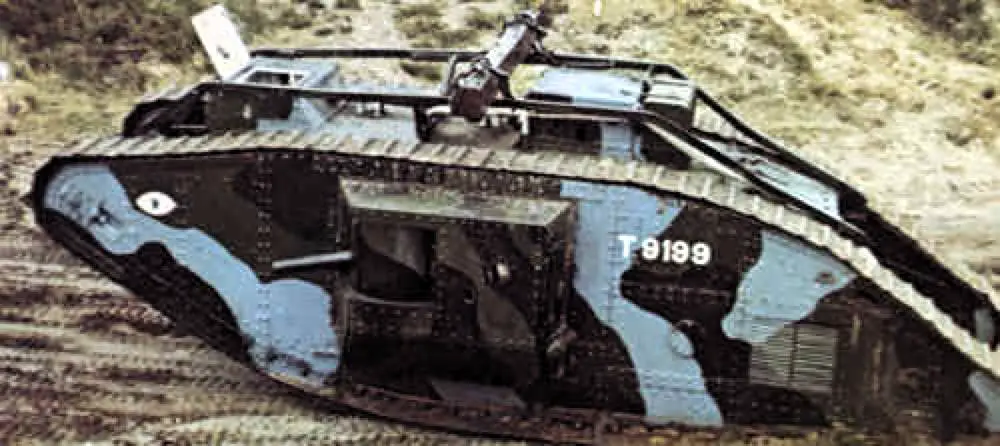
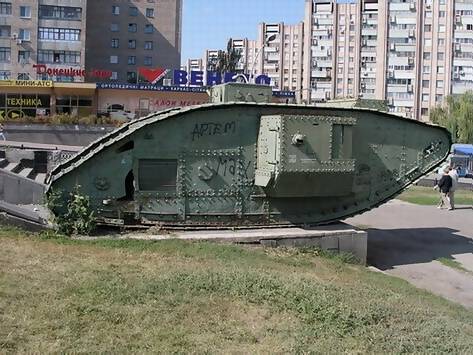
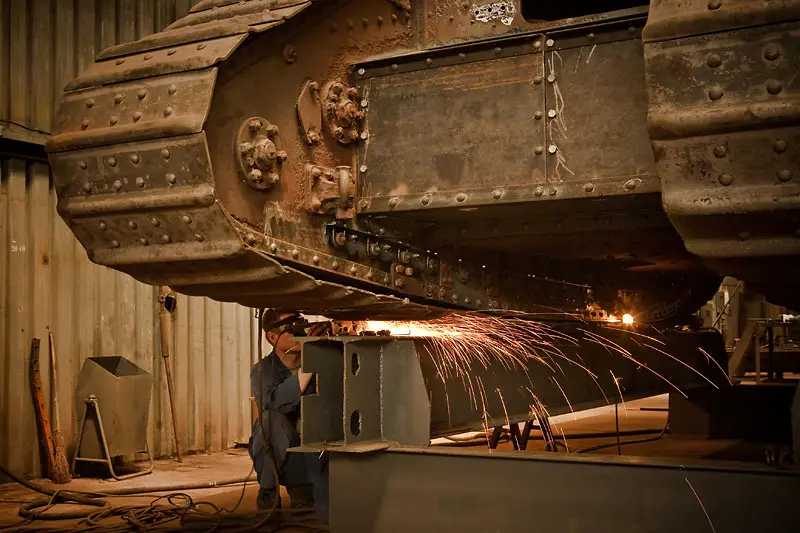
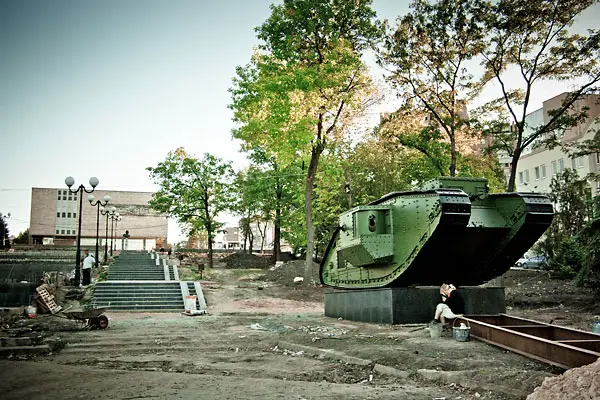
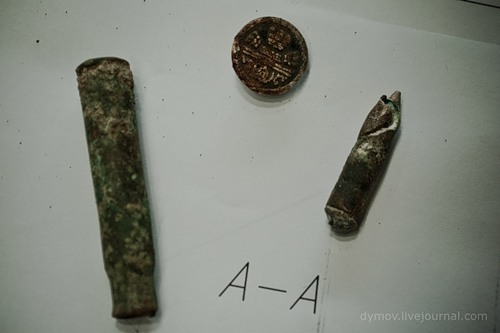
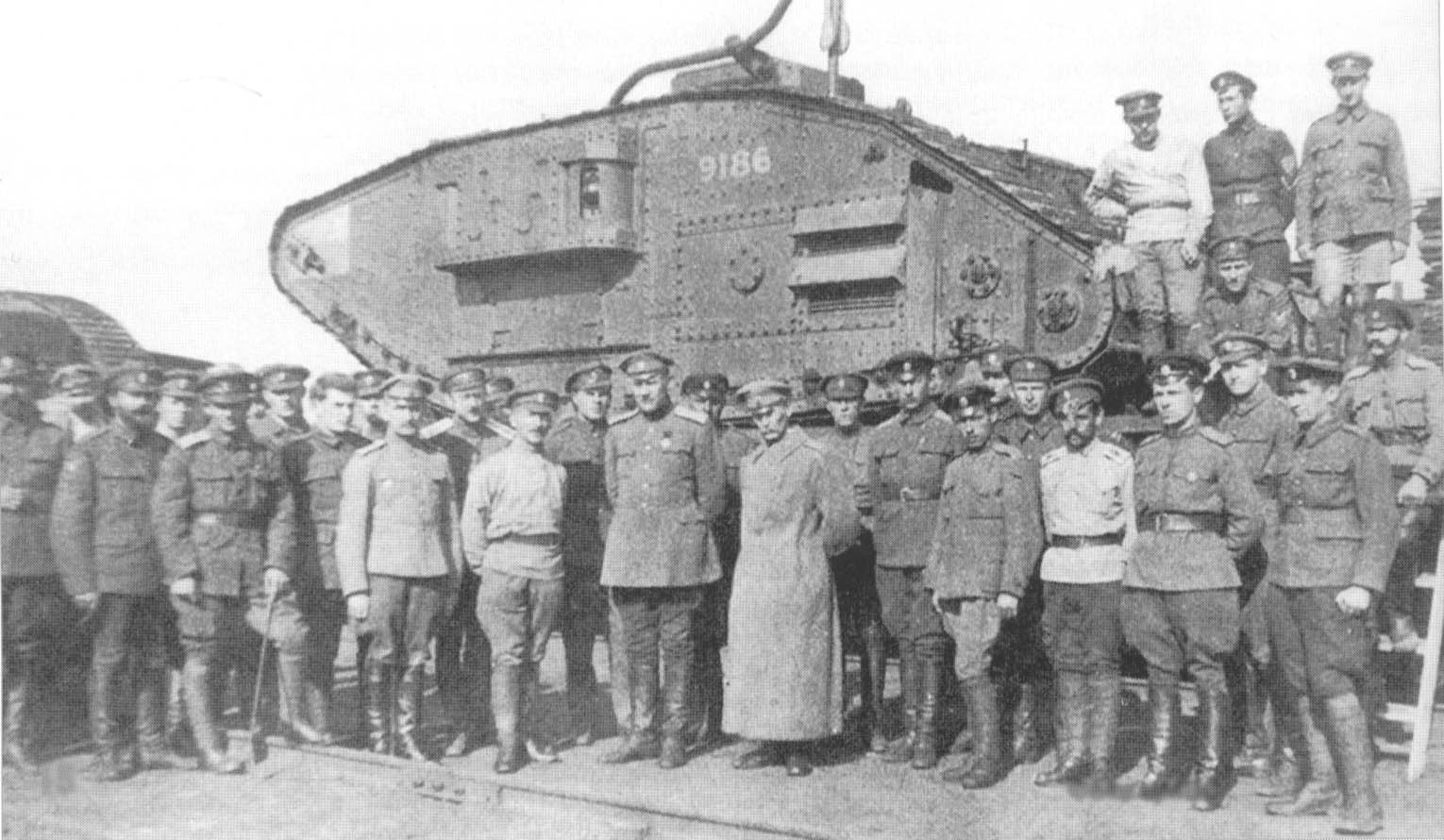
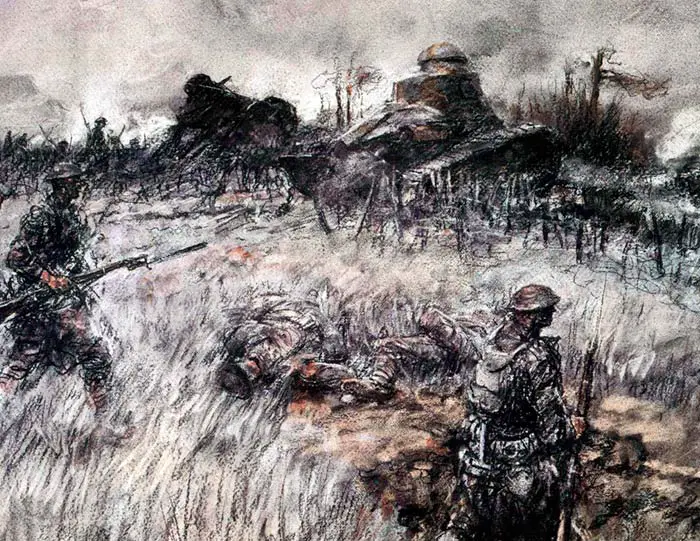
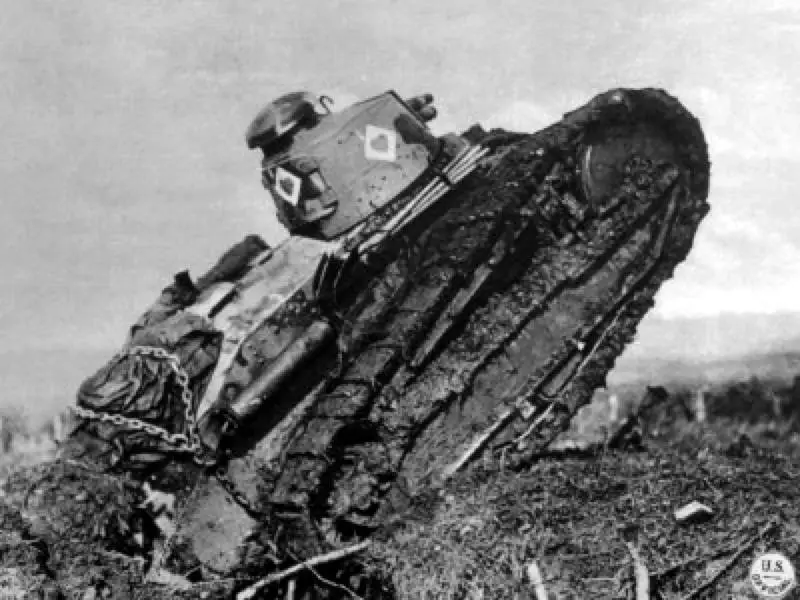
12 thoughts on “The Tanks of 1918”
As a little nipper I remember seeing and touching Mephisto on outdoor display. Nowadays they take better care of it, it being the last one and all. Australia’s parks, messes and the monuments in every small town still feature a lot of the 2nd Reich’s equipment, even after the scrap drives during the Great War’s sequel. For all the hoopla being made about the Anzacs of late, we couldn’t match them today…and they probably wouldn’t spit on us if we were on fire. Sorry we pissed your legacy up against the wall, Gentlemen, and are dishonouring your memory. I guess that goes for all the nations.
http://www.qm.qld.gov.au/Find+out+about/Histories+of+Queensland/Conflict/Mephisto
from front-line British liaison officer E.L. Spears’ description of the Nivelle Offensive, 16 April 1917, which saw the first use of tanks by the French, and the catastrophic failure of which spun the French Army in open mutiny:
“Nivelle has really succeeded in infusing his high expectations into the troops. Down comes the rain, but all the water in the world cannot damp their ardour….The falling sheets of water do not muffle the roaring, screeching sound overhead, and hardly blur the stabbing flashes as the shells land in murderous coveys on the distant heights where we imagine the Germans to be cowering. Drum-fire, the constant pulsating beat of thousands of explosions merging into one throbbing resonance, while over the Aisne satan’s garden seems to blossom, vivid with monstrous, refulgent flowers of flame. Standing in freezing water up to their waists, the men in the trenches watch, fascinated….During the latter part of the night I move forward with the troops and now that the hour of attack approaches stand watching, deafened by the clamour of some nearby howitzers and blinded by the 75’s spitting fire…Some signalers are identifying invisible topographical features with what seems unjustified assurance. ‘That must be Craonne over there, see what a gruelling the place is getting…Ailles, where those big shells are falling’, and a sentence constantly recurs” ‘Qu’es qu’ils prennent, les Boches!’”
“4:30 AM…seems as if a finger is being slowly drawn across the sooty blackness of the northeastern horizon, leaving in its track a grey line, imperceptibly increasing, against which the rain becomes visible….The red glow over the area upon which the French guns were concentrating dims, changing as the light increases into huge spirals of grey, green, and black smoke that show opaquely through the mist hanging over the Aisne hills. Now the din becomes appalling as the 75’s increase their rate of fire, their sharp unmistakable bark blending into a continuous hammering howl which, loud and excruciatingly painful as it is, cannot drown out the whipping, ripping sound of the shells tearing through the air….Five thousand three hundred and fifty guns of all calibres are firing on a 40 km.-long front of attack….impossible to realize that such a bombardment, baffling the mind and stupifying the senses, could be inadequate…”
“As the light increases I see the slopes behind me to the south are black with troops. Cavalry in massive formations, men standing to their horses…Ahead, infantry are advancing in columns alongside hedges, while at other points entire regiments have stacked arms, and groups were formed around officers giving last explanations to their men or pointing out objectives on maps….Suddenly a glint of sunshine bathes the whole scene in cold light. The effect is instantaneous. A thrill, something like pleasure runs through the troops. I’m surrounded by the grinning faces of men whose eyes shone. Seeing my British uniform some French soldiers come up to me and gesticulate toward the distant hills, ‘The Germans won’t stand here any more than they did at Arras. They fairly ran away there, didn’t they?’ The effect of the cheerful voices is enhanced by sparkles of light dancing on thousands of blue steel helmets. An officer shows me the Order of the Day: ‘We are playing our last cards. A higher courage than ever is demanded…’”
“5:30 AM – the sun disappears in a wet haze…bombardment is frantic now, the wait exasperating…still the German guns hardly respond. Have they withdrawn? Do they intend to retire…or…does this absence of artillery fire conceal a trap? At 5:58 a sudden great hush falls over the battlefield. As at Arras, it gives the impression of Death, a finger to his lips….in the stillness, purring engines. In great flights French aircraft are heading for the German lines. At 6 AM to the second, the noise resumes with increased violence, while at the same time innumerable machine-guns begin to crackle along the whole front, making a sound as of dry undergrowth burning fiercely while ten thousand riveters hammer….With straining eyes and beating hearts all try to distinguish the special tack-tack of the German machine-guns. They or the French who are raising Can over there? Hard to tell, though presently I see an officer with a white face and a crucified look in his eyes who tells me he’s certain that the German machine-guns cannot have been destroyed, for the sound of hundreds of them can easily be heard form where he was.”
” But…the start seems good, Almost at once the immense mass of troops within sight begins to move. Long thin columns are swarming toward the Aisne. Suddenly some 75’s appear, galloping forward, horses stretched out, drivers looking as if they are riding a finish. ‘The Germans are on the run, the guns are advancing’, shout the infantry jubilantly. Then it starts to rain again…I advance further, trying to see. I reach a broken-down wall when there is a deafening explosion. Stones and earth fly in every direction as I fling myself down. Get up, peer around the wall. A French officer is standing there, men running towards him, several bodies horribly mutilated lie about. He begins to speak, fast and staccato. Suddenly blood begins to drip from his sleeve and a large red stain shows on his side. All at once his eyes show white…”
“Only slowly is it possible to get some idea of what is happening. In a dug-out with some preoccupied senior gunners, I unfold my map showing the lines the attack was scheduled to reach at given hours. It’s obvious the troops are far behind their time-tables. Evidently they have not been able to keep up with the insane pace of the barrage…at some points German machine-guns mow them down to a man. This was the case of the splendid 1st Division of I Corps, so long our neighbor on the Somme, which was stopped dead opposite Craonne…first waves felled on the parapets. The headlong pace of the advance was elsewhere not long maintained. German machine-gunners, scattered in shell-holes, concentrated in nests, or appearing suddenly at the mouth of deep dug-outs, take a terrible toll of the troops now laboring up the rugged slopes. Everywhere the same story. The attack gains ground, then slows, unable to follow the barrage which, lifted a hundred yards every 3 minutes, is soon out of sight. As soon as the infantry and artillery become dissociated, German machine-guns conjure as if my magic from the most unlikely places and open fire from both front and flanks, sometimes from the rear as well. ‘We face’, runs one report, ‘not barbed wire entanglements but whole forests of wire…machine-guns appear everywhere, traps of every description, the uphill terrain slippery and impassable…’”
“10:30 AM – weather getting worse…at one moment snowing, at another water coming down in sheets…attacking waves of men vanish…now and then the silhouettes of a line of soldiers can be seen outlined on the horizon, immobile for a few moments, then swallowed by the landscape…”
“1:00 PM – the tanks, upon which so many hopes were centered, appear near Juvincourt…the first group of 80 machines, on XXXII Corps front, two to four hours behind schedule. Attack has already petered out, and the troops cannot be induced to follow machines that draw upon themselves such hellish fire. An agonizing sight…watching the tanks gallant effort to advance. Seems as if none can escape such a concentration of fire, and few do. Each individual tank, as soon as the Germans spot it, is enveloped in smoke and flame as salvo after salvo bursts around it; then out it crawls, turning this way and that in a moving fence of explosions. The fate of three groups of tanks (some 48 machines) which attack with V Corps in the direction of Ville-aux-Bois is particularly awful. German planes spot them coming up and report to artillery….A bridge over the first German trench is begun for them, but not finished when they arrive. Engineers first, then infantry, attempt to complete the work but German fire soon makes this impossible. The leading tank hesitates, then attempts to cross…falls forward, ditched and a moment later hit and on fire. The others stop, irresolute, then attempt to deploy in a morass…the German guns are on them. Machine after machine, festooned with reserve petrol cans, catches fire and in a few seconds are red glowing masses of metal, incinerating their crews. Exits mostly too small for them to escape…many a man, a mass of flames, is seen jumping from the machine and writhing on the ground for a few moments…Out of 48 tanks engaged, 32 destroyed…”
“2:30 PM: Germans launching a massive counter-attack…”
– Spears, PRELUDE TO VICTORY (London, 1939), pp. 486-499
You got through an entire comment without a reference to racial slurs or conspiracy theories, and, moreover, on topic. In fact, that’s an excellent comment.
Happy New Year, Haxo. We’re feeling generous around here. You start 2016 unbanned, again. You know what you have to do to stay that way.
Very interesting write up on Tanks. Thank you.
Goos write up. 🙂
The soviets developed the FT concept into their own first tank the T-18. Which put their own spin on it rather than the weird Ford six ton which is such a near close copy in imperial measurments.
For all things WW1 tanks I’d like to point towards the really great Landships website: http://landships.info/landships/tank_articles.html
Excellent site. Though I’m a bit suspicious of the Lebedenko tank. It looks like a reject from Star Wars!
Very good write up and the comment on the Neville offensive that lead to the 1917 munity. Great War You Tube series has some up about tanks and looking forwards to how they treat this. I think the main reason why anything but the FT-17 is mentioned in most english sources has to do with language and the fact the earlier two tanks were failures.
Re. the disabled site- you might want to try looking up the former URL on the ‘Wayback Machine’ (http://)- which basically spiders the entire internet. As long as the domain hasn’t been taken over by a spammer with a page full of crap links, it’ll probably give you the page as of a year or two ago.
Great article. I really enjoy studying tank development through the world wars and would like to see more on this topic. I’m currently reading-Panzer-A Revolution in Warfare, 1939-1945 by Roger Edwards. It’s a good read.
Happy new year to all!
I wonder if the cartridge case mentioned above is a 7.9X57? We know that the Germans captured large numbers (comparatively speaking) of British tanks that had suffered mechanical issues and put them to their own uses, so conceivably it could be a British tank repurposed to German usage, repurposed to Russian use, and who knows how many in between.
Or it could just mean that the Russians used a captured MG08 or MG08/15 in it at some point in its rather colourful career… ;^)
Great article! Something you might look into doing some day is an article on “The Guns of Plan 1919” or something like that. Talk about lots of cool stuff that was “in the works” had the war continued for another 6 months or so! Pretty much everything that got used in WWII had its origins in the last years of The Great War, including close air support, squad automatic weapons, SMG’s, mass-issue of semi-auto rifles to the infantry, etc. Lots of fun stuff in there to explore!
Light Dragoon
One of my favorite offensives that never was, was Billy Mitchell’s plan to drop most of a division by parachute in the German rear. The plan was OBE, and then Mitchell, of course, was overcome by his own lack of tact.
Many factions in Ukraine had lots of access to German/Austrian stores. Many German/KuK units made “drug deals” with the local factions around Nov-Dec 1918 after the collapse and revolutions in their home countries. Like now, there were many different various factions in Ukraine. (Hetman Skoropadski, Ukrainian Directory, Petluyra, Makhno, Reds and Proto-White Russians.)
Many of these withdrawing units literally traded rifles, machine-guns and ammo for foodstuff/transportation and safe passage back home. To my knowledge, there is no specific study in English about the withdrawal of the KuK and German Army. Most of this info comes from accounts from the Makhnovists, some of which was published in the interwar period.
A study of Hetman Pavel Skoropadski is quite interesting: faked Suicide, was transported in a German Ambulance back to Germany, killed by allied bombing in 1945!
https://en.wikipedia.org/wiki/Pavlo_Skoropadskyi
The Russian playwright Mikhail Bulgakov wrote about this strange period in his play House of the Turbins / The White Guard. Despite his sympathy for the White Russians, Stalin really liked the guy and kept him around! Stalin personally intervened on his behalf at least twice if I remember correctly.